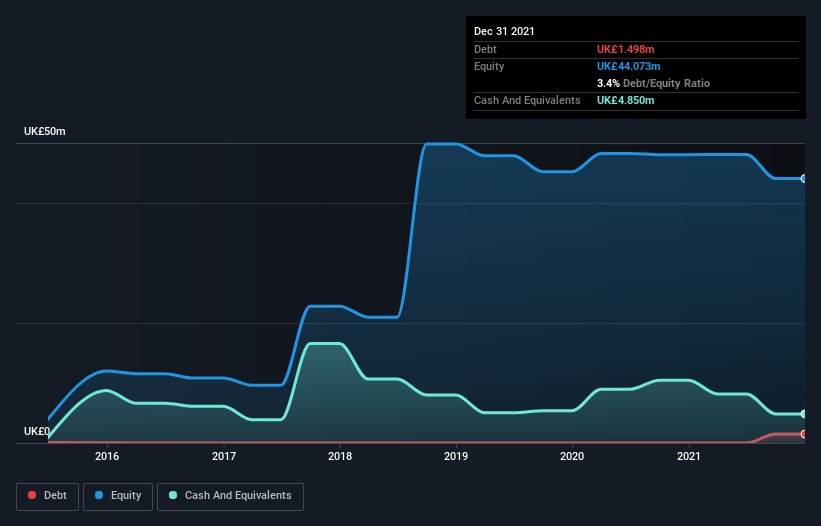Does Science in Sport (LON:SIS) Have A Healthy Balance Sheet?
Legendary fund manager Li Lu (who Charlie Munger backed) once said, 'The biggest investment risk is not the volatility of prices, but whether you will suffer a permanent loss of capital.' So it seems the smart money knows that debt - which is usually involved in bankruptcies - is a very important factor, when you assess how risky a company is. As with many other companies Science in Sport plc (LON:SIS) makes use of debt. But is this debt a concern to shareholders?
When Is Debt Dangerous?
Generally speaking, debt only becomes a real problem when a company can't easily pay it off, either by raising capital or with its own cash flow. In the worst case scenario, a company can go bankrupt if it cannot pay its creditors. However, a more common (but still painful) scenario is that it has to raise new equity capital at a low price, thus permanently diluting shareholders. Of course, debt can be an important tool in businesses, particularly capital heavy businesses. The first thing to do when considering how much debt a business uses is to look at its cash and debt together.
See our latest analysis for Science in Sport
What Is Science in Sport's Debt?
The image below, which you can click on for greater detail, shows that at December 2021 Science in Sport had debt of UK£1.50m, up from none in one year. However, its balance sheet shows it holds UK£4.85m in cash, so it actually has UK£3.35m net cash.
How Strong Is Science in Sport's Balance Sheet?
According to the last reported balance sheet, Science in Sport had liabilities of UK£15.4m due within 12 months, and liabilities of UK£14.4m due beyond 12 months. Offsetting this, it had UK£4.85m in cash and UK£12.1m in receivables that were due within 12 months. So its liabilities outweigh the sum of its cash and (near-term) receivables by UK£12.9m.
Of course, Science in Sport has a market capitalization of UK£82.3m, so these liabilities are probably manageable. However, we do think it is worth keeping an eye on its balance sheet strength, as it may change over time. While it does have liabilities worth noting, Science in Sport also has more cash than debt, so we're pretty confident it can manage its debt safely. There's no doubt that we learn most about debt from the balance sheet. But it is future earnings, more than anything, that will determine Science in Sport's ability to maintain a healthy balance sheet going forward. So if you're focused on the future you can check out this free report showing analyst profit forecasts.
In the last year Science in Sport wasn't profitable at an EBIT level, but managed to grow its revenue by 24%, to UK£63m. With any luck the company will be able to grow its way to profitability.
So How Risky Is Science in Sport?
We have no doubt that loss making companies are, in general, riskier than profitable ones. And we do note that Science in Sport had an earnings before interest and tax (EBIT) loss, over the last year. Indeed, in that time it burnt through UK£6.7m of cash and made a loss of UK£6.8m. However, it has net cash of UK£3.35m, so it has a bit of time before it will need more capital. Science in Sport's revenue growth shone bright over the last year, so it may well be in a position to turn a profit in due course. Pre-profit companies are often risky, but they can also offer great rewards. When analysing debt levels, the balance sheet is the obvious place to start. However, not all investment risk resides within the balance sheet - far from it. Be aware that Science in Sport is showing 1 warning sign in our investment analysis , you should know about...
At the end of the day, it's often better to focus on companies that are free from net debt. You can access our special list of such companies (all with a track record of profit growth). It's free.
Have feedback on this article? Concerned about the content? Get in touch with us directly. Alternatively, email editorial-team (at) simplywallst.com.
This article by Simply Wall St is general in nature. We provide commentary based on historical data and analyst forecasts only using an unbiased methodology and our articles are not intended to be financial advice. It does not constitute a recommendation to buy or sell any stock, and does not take account of your objectives, or your financial situation. We aim to bring you long-term focused analysis driven by fundamental data. Note that our analysis may not factor in the latest price-sensitive company announcements or qualitative material. Simply Wall St has no position in any stocks mentioned.

 Yahoo Finance
Yahoo Finance 